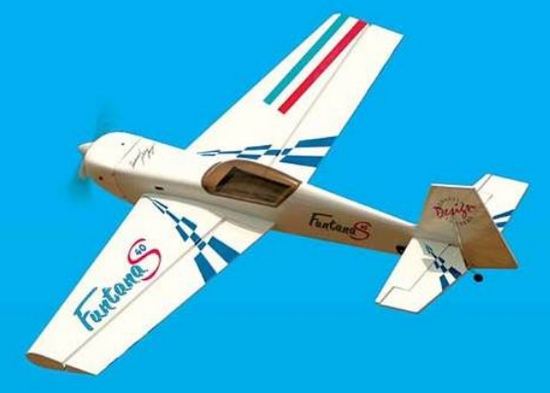
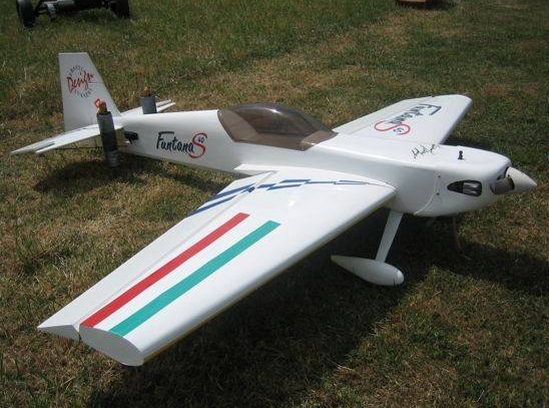
HANGAR 9 FUNTANA 40S
(Model No. 54)


Although this is a beautiful-looking model, it was at first a big disappointment
First I noticed that the build-quality was really poor, and later I discovered that the flying characteristics were terrible!
Here are some pix showing the bad build:
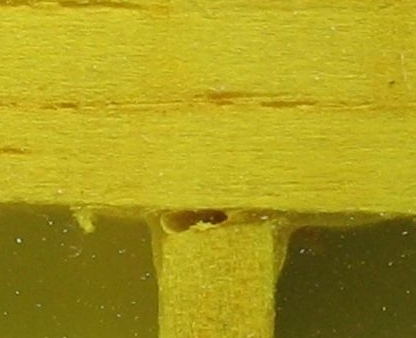
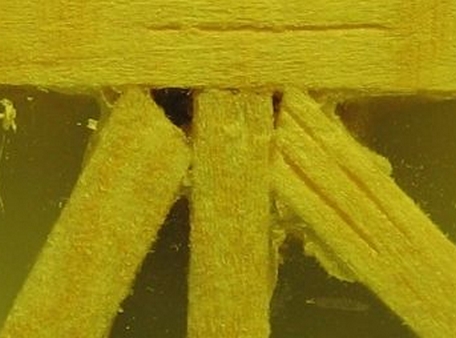
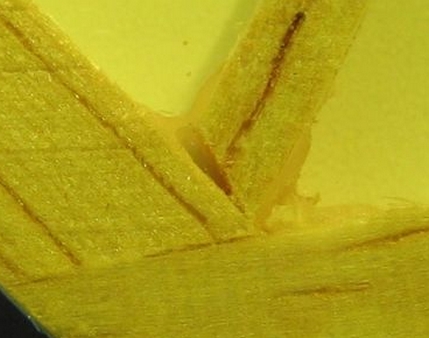

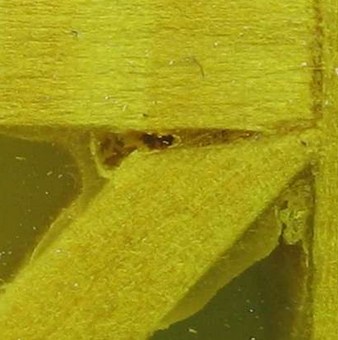
The suppliers were Inwood Models and to give them their due, both they and Hangar 9 agreed with me that the build quality was bad and that I had received a "bad" kit. But as I had just about finished building the model by the time I noticed the problem - and as Inwood took a while to get back to me, it was impossible for them to replace my Funtana. Instead they sent me a new Hangar 9 Twist as "compensation"
Flying the Funtana was at first a complete nightmare! It had an ASP .61 4-stroke fitted and would stall far too easily. Eventually I had to modify the leading edge of the wing in order to get it to fly as well as it should have done out of the box. Here you see the original leading edge pasted over the modified leading edge for comparison:
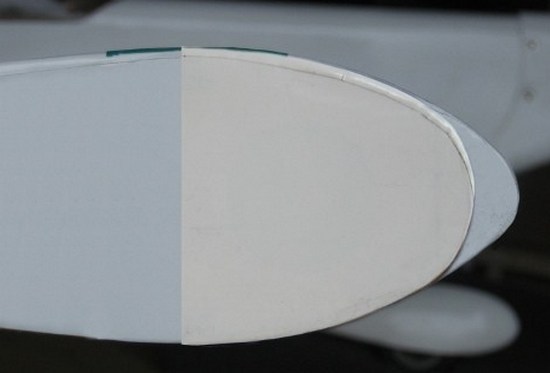
This modification transformed the model into a lovely flier, and it soon became my favourite model so I quickly treated it to a new, larger engine (Saito .100), and a pair of SFG's:

These wing-tip add-ons allow the model to be flown in knife-edge much slower than it can be flown without them, and they also add a new dimension to the aerobatics it's capable of too
Later I realised that the model ought to be capable of much better knife-edge (without the SFG's) than it was. But it just wouldn't do-so using the standard Futaba servos I've always used. Fitting a high-torque digital rudder servo cured the problem - and now it's definitely my favourite model to fly
One day I 'almost' had a disaster, when an aileron 'almost' detached itself from the wing:
On Monday afternoon, the 19th May 2008, she "went in - big style" during flight No 240
I'd been struggling for a week or so to understand why the model's on-board battery condition indicator insisted that the Rx battery was low after just 2 or 3 flights, yet when I re-charged the 2,100mAh battery afterwards it would only take 330 to 350mA. I changed the battery several times and even bought a new battery meter to help me check-out the problem, but I just couldn't make any sense of it
On Sunday 18th May, 2008, I suspected that the Rx switch/harness could be faulty, so I changed it for a new one I'd bought a couple of months previously. The very next flight ended rather abruptly when I lost all radio control whilst the model was heading straight for the ground at considerable height. Yep, she's now "no-more!"
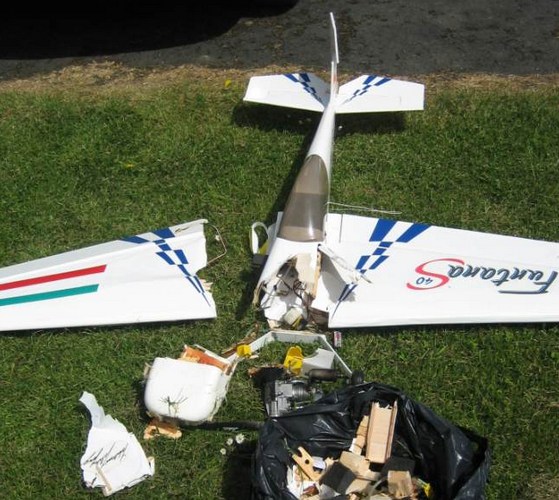

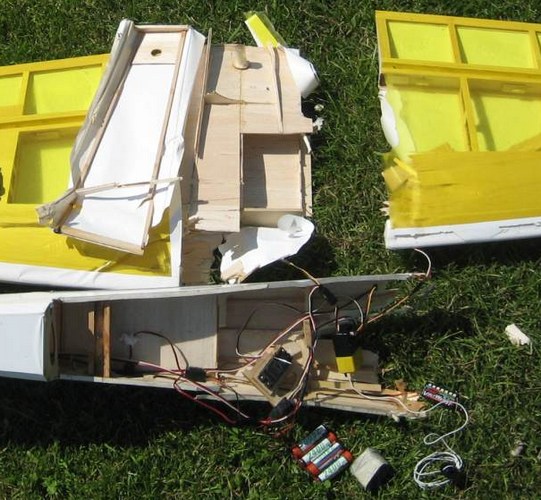
The "post-crash radio check" showed that the radio was working "perfectly!" But back in my workshop I removed and examined the only thing I'd changed since I last flew the model: a new switch harness. Looking inside the switch I could tell that an amateur had been at work - the manufacturer's soldering iron tip had been allowed to touch the plastic parts of the switch in several places:
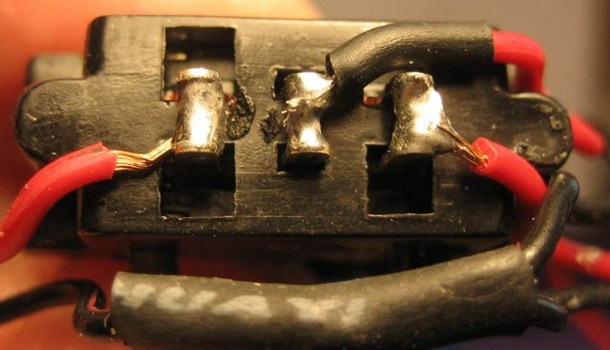
Pulling-back the "shrink-tube" insulation from the soldered connection, which was concealed inside the Rx switch, I found this "dry joint:"
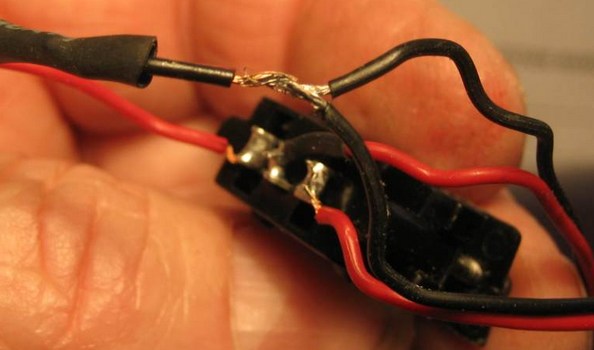
Seen from a slightly different angle:
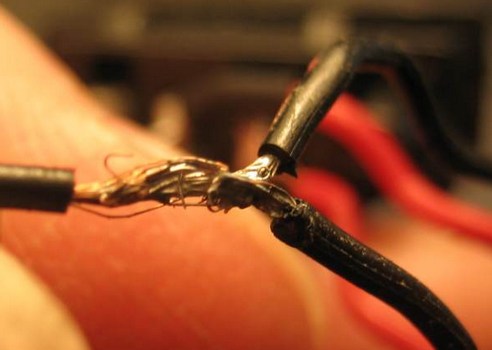
And here's a pic of the same dry joint, showing how it fell apart when I dropped it into the palm of my son's hand, asking: "do you think this could have caused my loss of radio signal?"
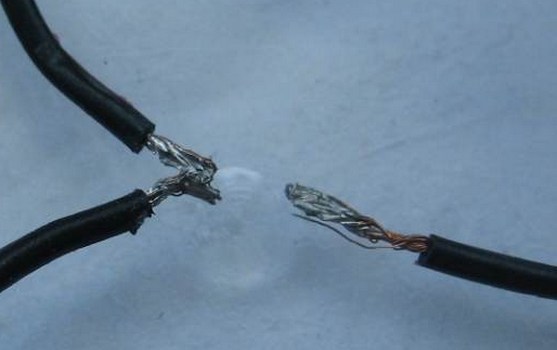
So, the Funtana was lost for the sake of a £5.50 badly manufactured Rx switch harness - but at least I now knew what had caused the crash. But I still didn't know what was causing the original and incorrect low battery warning. But with the flight-pack now spread-out on my bench I soon spotted that I'd inserted an extension lead between the battery and the switch harness. This had been done in order to move the battery, and therefore the balance point, a long way to the rear, and it was this extension which was to blame for the "low battery" problem. I couldn't see anything physically thing wrong with the cable, but my meter detected a considerable drop in voltage over the length of it . . . . . so now I know what caused both problems. The model wasn't worth re-building, so I made an immediate start on building the AeroSport Extra 300S . . . .